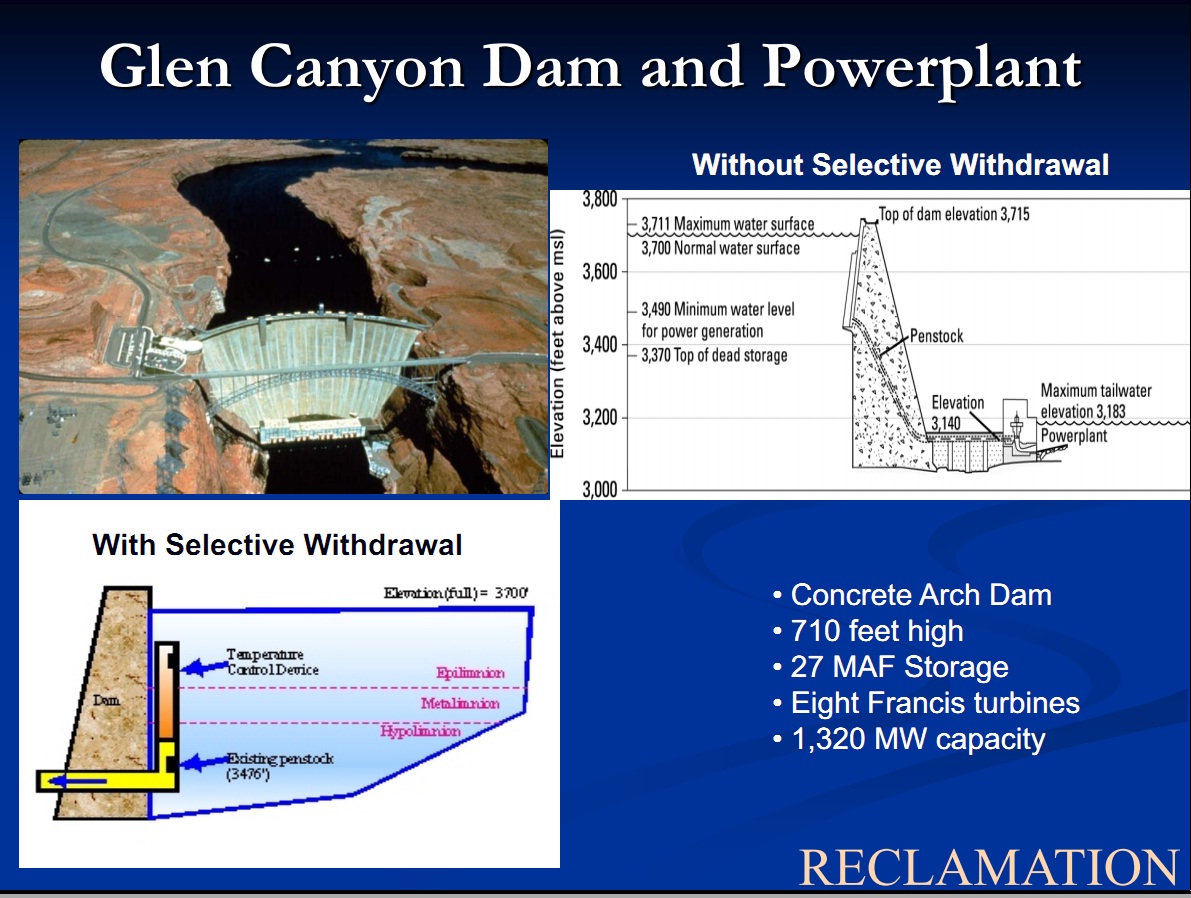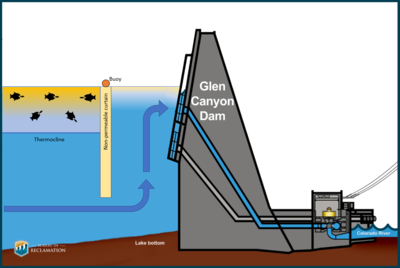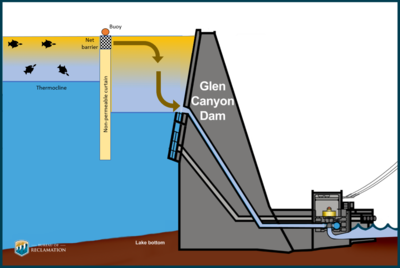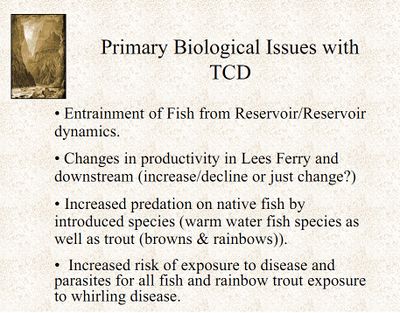Difference between revisions of "TCD Learning Page"
Cellsworth (Talk | contribs) |
Cellsworth (Talk | contribs) |
||
| Line 70: | Line 70: | ||
Examples: Shasta Dam, Folsom Dam, Jordanelle Dam, Flaming Gorge Dam, Hungry Horse Dam, Cougar Dam, Applegate Lake. | Examples: Shasta Dam, Folsom Dam, Jordanelle Dam, Flaming Gorge Dam, Hungry Horse Dam, Cougar Dam, Applegate Lake. | ||
| − | A selective temperature withdrawal system is a rigid steel structures on the upstream face of the dam to enclose the penstock intakes (Svoboda 2020). Selective temperature withdrawal systems can be new external-frame structures that are attached to the dam or retrofit modifications to existing dam features, such as adding gates to the trash rack structure around the penstock intakes (Svoboda 2020). A previous selective temperature withdrawal system has been considered for the Glen Canyon Dam in the early 2007-2008 (Vermeyen 2011). Earlier proposals for the selective temperature withdrawal system were focused on warming downstream releases but the design was never finished. | + | A selective temperature withdrawal system is a rigid steel structures on the upstream face of the dam to enclose the penstock intakes (Svoboda 2020). Selective temperature withdrawal systems can be new external-frame structures that are attached to the dam or retrofit modifications to existing dam features, such as adding gates to the trash rack structure around the penstock intakes (Svoboda 2020). A previous selective temperature withdrawal system has been considered for the Glen Canyon Dam in the early 2007-2008 (Vermeyen 2011). Earlier proposals for the selective temperature withdrawal system were focused on warming downstream releases but the design was never finished. |
| + | |||
| + | [[Image:HungryHorseTCD.png|thumb|center|400px|]] | ||
| + | |||
| + | [[Image:GlenCanyonTCD.png|thumb|center|400px|]] | ||
=='''Destratification: (Bubblers, Pumps, etc.)'''== | =='''Destratification: (Bubblers, Pumps, etc.)'''== | ||
Revision as of 17:05, 26 September 2024
|
|
Temperature ControlBefore Glen Canyon Dam was constructed, the natural flow cycle of the Colorado River included a seasonal warming trend in the late summer as the water temperature would increase from the near freezing winter temperature to approximately 85 degrees. Once the dam was constructed, the temperature of the water released downstream became relatively steady at between 45-50 degrees as water was drawn year round from the deep, fixed level penstock intakes (used for power production). Near the dam, these cold releases are tolerated by the trout fishery, but as this water moves downstream, it only warms to about 60 degrees which is not warm enough to allow endangered, native, warm water fish, such as the humpback chub, to reproduce in the mainstem of the Colorado River. The U.S. Fish and Wildlife Service (FWS) issued a biological opinion in 1994, that recommended that temperature control modifications to the existing intake structures at the dam, be investigated by the Bureau of Reclamation (Reclamation). Temperature control modifications would allow for water to be drawn from different depths of the reservoir. Instead of only drawing water from the existing intake openings which are fairly deep and cold, the temperature control modifications would allow for water to be drawn from closer to the reservoir surface, which is much warmer. The goal would be to determine the right temperature combination of the cold and warmer water withdrawals to benefit the native endangered fish, while avoiding the possibility of encouraging competitors (non-native, warm-water fish) into the system. [1] |
| |
|
|
|---|
|
|





